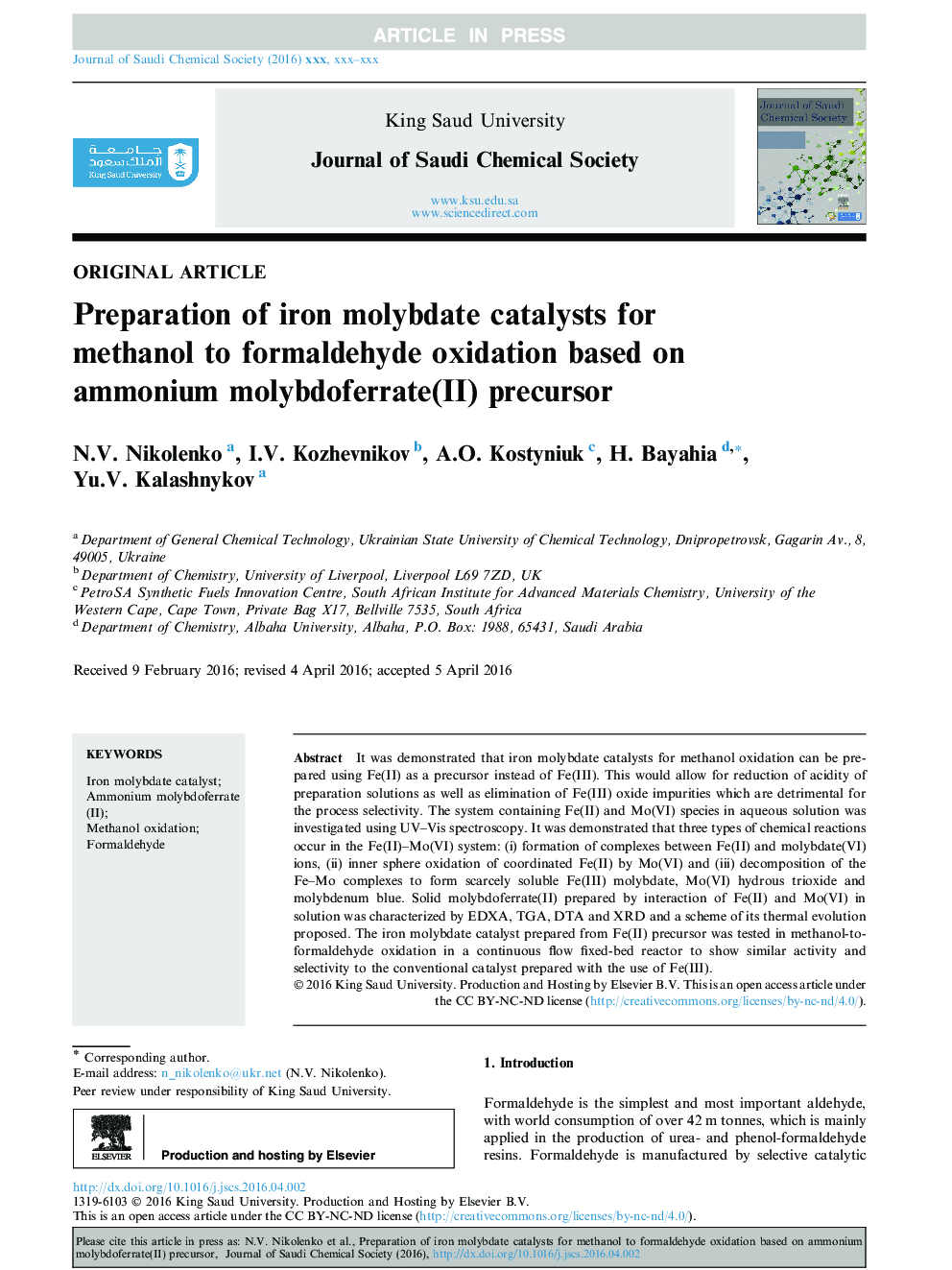| Article ID | Journal | Published Year | Pages | File Type |
|---|---|---|---|---|
| 6669929 | Journal of Saudi Chemical Society | 2018 | 8 Pages |
Abstract
It was demonstrated that iron molybdate catalysts for methanol oxidation can be prepared using Fe(II) as a precursor instead of Fe(III). This would allow for reduction of acidity of preparation solutions as well as elimination of Fe(III) oxide impurities which are detrimental for the process selectivity. The system containing Fe(II) and Mo(VI) species in aqueous solution was investigated using UV-Vis spectroscopy. It was demonstrated that three types of chemical reactions occur in the Fe(II)-Mo(VI) system: (i) formation of complexes between Fe(II) and molybdate(VI) ions, (ii) inner sphere oxidation of coordinated Fe(II) by Mo(VI) and (iii) decomposition of the Fe-Mo complexes to form scarcely soluble Fe(III) molybdate, Mo(VI) hydrous trioxide and molybdenum blue. Solid molybdoferrate(II) prepared by interaction of Fe(II) and Mo(VI) in solution was characterized by EDXA, TGA, DTA and XRD and a scheme of its thermal evolution proposed. The iron molybdate catalyst prepared from Fe(II) precursor was tested in methanol-to-formaldehyde oxidation in a continuous flow fixed-bed reactor to show similar activity and selectivity to the conventional catalyst prepared with the use of Fe(III).
Keywords
Related Topics
Physical Sciences and Engineering
Chemical Engineering
Chemical Engineering (General)
Authors
N.V. Nikolenko, I.V. Kozhevnikov, A.O. Kostyniuk, H. Bayahia, Yu.V. Kalashnykov,
